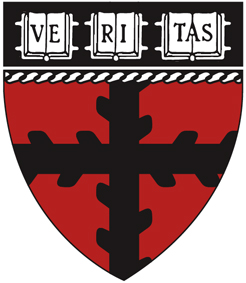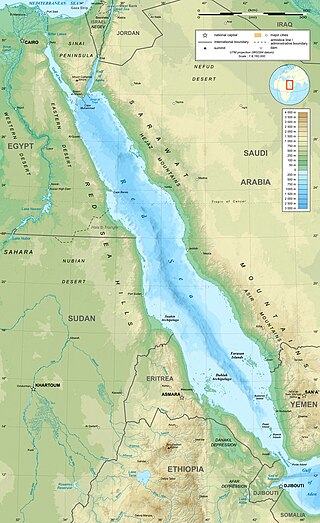Richard Brook Cathcart (born 1943) is an American geographer who specializes in macro-engineering.
Contents
He is co-author of Macro-Engineering: A Challenge for the Future, published 2007 by Springer Science & Business Media [1] .
Richard Brook Cathcart (born 1943) is an American geographer who specializes in macro-engineering.
He is co-author of Macro-Engineering: A Challenge for the Future, published 2007 by Springer Science & Business Media [1] .

A Dyson sphere is a hypothetical megastructure that encompasses a star and captures a large percentage of its solar power output. The concept is a thought experiment that attempts to imagine how a spacefaring civilization would meet its energy requirements once those requirements exceed what can be generated from the home planet's resources alone. Because only a tiny fraction of a star's energy emissions reaches the surface of any orbiting planet, building structures encircling a star would enable a civilization to harvest far more energy.

Physical geography is one of the three main branches of geography. Physical geography is the branch of natural science which deals with the processes and patterns in the natural environment such as the atmosphere, hydrosphere, biosphere, and geosphere. This focus is in contrast with the branch of human geography, which focuses on the built environment, and technical geography, which focuses on using, studying, and creating tools to obtain,analyze, interpret, and understand spatial information. The three branches have significant overlap, however.

Malcolm Douglas McIlroy is a mathematician, engineer, and programmer. As of 2019 he is an Adjunct Professor of Computer Science at Dartmouth College. McIlroy is best known for having originally proposed Unix pipelines and developed several Unix tools, such as spell, diff, sort, join, graph, speak, and tr. He was also one of the pioneering researchers of macro processors and programming language extensibility. He participated in the design of multiple influential programming languages, particularly PL/I, SNOBOL, ALTRAN, TMG and C++.

The Mohorovičić discontinuity, usually referred to as the Moho discontinuity, Moho boundary, or just Moho, is the boundary between the Earth's crust and the mantle. It is defined by the distinct change in velocity of seismic waves as they pass through changing densities of rock.
Megascale engineering is a form of exploratory engineering concerned with the construction of structures on an enormous scale. Typically these structures are at least 1,000 km (620 mi) in length—in other words, at least one megameter, hence the name. Such large-scale structures are termed megastructures.
Computational science, also known as scientific computing, technical computing or scientific computation (SC), is an area of science that uses advanced computing capabilities to understand and solve complex physical problems. This includes

The internal structure of Earth is the solid portion of the Earth, excluding its atmosphere and hydrosphere. The structure consists of an outer silicate solid crust, a highly viscous asthenosphere and solid mantle, a liquid outer core whose flow generates the Earth's magnetic field, and a solid inner core.
In engineering, macro-engineering is the implementation of large-scale design projects. It can be seen as a branch of civil engineering or structural engineering applied on a large landmass. In particular, macro-engineering is the process of marshaling and managing of resources and technology on a large scale to carry out complex tasks that last over a long period. In contrast to conventional engineering projects, macro-engineering projects are multidisciplinary, involving collaboration from all fields of study. Because of the size of macro-projects they are usually international.

Stellar engines are a class of hypothetical megastructures which use the resources of a star to generate available work. For instance, they can use the energy of the star to produce mechanical, electrical or chemical work or they can use the impulse of the light emitted by the star to produce thrust, able to control the motion of a star system. The concept has been introduced by Badescu and Cathcart. The variants which produce thrust may accelerate a star and anything orbiting it in a given direction. The creation of such a system would make its builders a type-II civilization on the Kardashev scale.
Grand Challenges are difficult but important problems set by various institutions or professions to encourage solutions or advocate for the application of government or philanthropic funds especially in the most highly developed economies and
... energize not only the scientific and engineering community, but also students, journalists, the public, and their elected representatives, to develop a sense of the possibilities, an appreciation of the risks, and an urgent commitment to accelerate progress.
Terraforming is well represented in contemporary literature, usually in the form of science fiction, as well as in popular culture. While many stories involving interstellar travel feature planets already suited to habitation by humans and supporting their own indigenous life, some authors prefer to address the unlikeliness of such a concept by instead detailing the means by which humans have converted inhospitable worlds to ones capable of supporting life through artificial means.

The Harvard John A. Paulson School of Engineering and Applied Sciences (SEAS) is the engineering school within Harvard University's Faculty of Arts and Sciences, offering degrees in engineering and applied sciences to graduate students admitted directly to SEAS, and to undergraduates admitted first to Harvard College. Previously the Lawrence Scientific School and then the Division of Engineering and Applied Sciences, the Paulson School assumed its current structure in 2007. Francis J. Doyle III has been its dean since 2015.
Keith Lofstrom is an American electrical engineer. He has a BSEE and MSEE from University of California, Berkeley. He is more widely known in the space advocacy community for a ground-based space launcher design, the Launch Loop, for which he has been credited by name in several works of science fiction. Frederik Pohl, who used the idea in several of his stories, once wrote that, of all the non-rocket spacelaunch concepts, he liked the Lofstrom Loop "best of all."
Cathcart is a Surname of Scottish origin. Notable people with the surname include:

The Red Sea Dam is a speculative macro-engineering proposal put forward in 2007 by a group of scientists and engineers. Although the authors' intentions are to explore "the ethical and environmental dilemmas and some of the political implications of macro-engineering", the proposal has attracted both criticism and ridicule.

The International Journal of Fracture is a scientific journal focused on fracture in materials science. Founded in 1965, it is published by Springer. The journal publishes original analytical, numerical and experimental contributions which provide improved understanding of the mechanisms of micro and macro fracture in all materials, and their engineering implications. The journal has an impact factor of 2.175 (2017)

Atlantropa, also referred to as Panropa, was a gigantic engineering and colonisation idea that was devised by the German architect Herman Sörgel in the 1920s, and promoted by him until his death in 1952. The project was devised to contain several hydroelectric dams in key points of the Mediterranean Sea, such as the Strait of Gibraltar and the Bosporus, to cause a sea level drop and create new land to settle.
Planetary management is intentional global-scale management of Earth's biological, chemical and physical processes and cycles. Planetary management also includes managing humanity’s influence on planetary-scale processes. Effective planetary management aims to prevent destabilisation of Earth's climate, protect biodiversity and maintain or improve human well-being. More specifically, it aims to benefit society and the global economy, and safeguard the ecosystem services upon which humanity depends – global climate, freshwater supply, food, energy, clean air, fertile soil, pollinators, and so on.

The Qattara Depression Project, or Qattara Project for short, is a macro-engineering project concept in Egypt. Rivalling the Aswan High Dam in scope, the intention is to develop the hydroelectric potential of the Qattara Depression by creating an artificial lake.
Richard Victor Alvarus Mattessich was an Austrian-Canadian business economist and Emeritus Professor of Accounting at the University of British Columbia, known for introducing the concept of electronic spreadsheets into the field of business accounting in 1961, as well as pioneering analytical and philosophical methods in accounting.